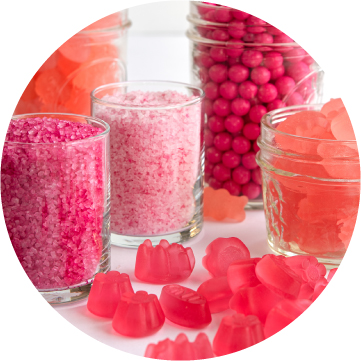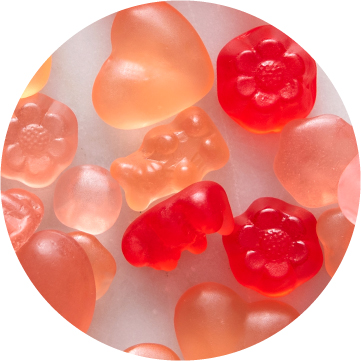Explore how the FDA’s Red 3 ban and California’s synthetic dye restrictions are reshaping food color regulation and driving global clean-label demand.
Recent regulatory developments in the U.S. are accelerating the shift toward natural food colors, presenting both challenges and opportunities for food manufacturers. In a landmark move, the FDA has announced a nationwide ban on Red No. 3 (erythrosine) in foods and ingested drugs, effective January 2027. This decision aligns with growing scrutiny over artificial food dyes and their potential health risks, especially for vulnerable populations such as children.
California, a state known for setting regulatory trends, has been at the forefront of these changes. The state passed legislation targeting six widely used synthetic dyes—Blue 1, Blue 2, Green 3, Red 40, Yellow 5, and Yellow 6—prohibiting their use in K-12 school food programs starting in 2028. Furthermore, California banned Red 3 in all foods sold within the state, reinforcing its commitment to improving public health and boosting consumer confidence in food safety. These actions, initiated prior to the FDA’s Red 3 ban, highlight California’s role as a pioneer in driving regulatory momentum.
As the largest U.S. economy, California’s influence cannot be overstated. Representing over 14% of national GDP, the state’s actions often set the tone for broader industry standards. Combined with the FDA’s decisive stance, these regulatory shifts signal an urgent call to action for food brands and manufacturers to reexamine formulations and accelerate the adoption of natural color alternatives.
Now is the time to take proactive steps to align with these new standards and meet the growing demand for clean-label products. The implications extend far beyond compliance, offering brands an opportunity to lead in innovation while addressing consumer expectations for transparency, safety, and sustainability.
How the FDA’s Red 3 ban signals a shift to natural food colors
 The simultaneous developments in California and at the FDA represent a critical moment in the evolution of food color regulation. California’s decision to ban synthetic dyes reflects a public health-first approach, driven by concerns over behavioral and attention issues linked to artificial colors in children. Meanwhile, the FDA’s nationwide ban on Red Dye No. 3 stems from a data-driven decision-making process, highlighting the agency’s concerns over long-term safety.
The simultaneous developments in California and at the FDA represent a critical moment in the evolution of food color regulation. California’s decision to ban synthetic dyes reflects a public health-first approach, driven by concerns over behavioral and attention issues linked to artificial colors in children. Meanwhile, the FDA’s nationwide ban on Red Dye No. 3 stems from a data-driven decision-making process, highlighting the agency’s concerns over long-term safety.
While the FDA’s ruling applies nationwide, California’s regulatory actions set a precedent that could inspire similar measures in other states. Brands that delay reformulation risk facing a patchwork of state-level restrictions, making compliance increasingly complex. Proactively adopting natural food colors not only ensures regulatory alignment but also positions companies as leaders in meeting consumer expectations for transparency and clean labels.
The growing consumer demand for transparency
Consumer demand for transparency in food labeling has reached new heights, driven by increasing awareness of synthetic additives. According to the 2024 Food and Health Survey by the International Food Information Council (IFIC), concerns over chemicals in food now outweigh fears of foodborne illnesses—a striking shift in consumer perception of food safety. Additionally, 46% of respondents were aware of California’s Red 3 ban, and 35% indicated they trust products labeled as “no artificial ingredients or colors” the most.
As this awareness grows, so does the preference for natural and clean-label products. Leading foodservice brands and retailers are responding by reformulating to remove synthetic dyes in favor of plant-based alternatives. For food manufacturers, this shift represents a significant opportunity: aligning with consumer values can enhance trust, differentiate products, and gain a competitive edge in an increasingly crowded marketplace.
The role of a trusted partner
Successfully navigating the transition to natural colors requires more than ingredient swaps—it demands strategic expertise, robust technical support, and supply chain resilience. This is where the value of a trusted partner becomes clear.
The right supplier can provide:
- Supply Chain Reliability: Consistent access to high-quality natural ingredients, cost stability, and traceability.
- Innovation Expertise: Pioneering new color solutions while ensuring regulatory clarity and approval across global markets.
- Technical Support: Hands-on guidance for color matching, formulation adjustments, and ensuring optimal performance in your specific applications.
With the right partner, brands can reformulate with confidence, ensuring their products meet regulatory standards while maintaining the vibrant, high-quality appeal consumers expect.
Transitioning to plant-based color solutions
 The FDA’s Red 3 ban and California’s legislative efforts highlight a broader, global shift toward transparency, health, and sustainability. These regulatory changes not only impact U.S.-based manufacturers but also extend to producers in other regions who export to the U.S. market. For companies worldwide, transitioning to plant-based color solutions is essential to ensure compliance, maintain market access, and demonstrate a commitment to innovation and consumer trust.
The FDA’s Red 3 ban and California’s legislative efforts highlight a broader, global shift toward transparency, health, and sustainability. These regulatory changes not only impact U.S.-based manufacturers but also extend to producers in other regions who export to the U.S. market. For companies worldwide, transitioning to plant-based color solutions is essential to ensure compliance, maintain market access, and demonstrate a commitment to innovation and consumer trust.
At EXBERRY®, we specialize in helping food manufacturers across the globe navigate this transition seamlessly. Our innovative plant-based color solutions, regulatory expertise, and technical support ensures your products maintain their vibrant visual appeal and stability—while meeting the evolving expectations of today’s global consumers.
Staying ahead of the curve
Don’t wait until the regulatory deadlines approach—start planning your transition today. Contact EXBERRY® to explore our natural color solutions, meet the needs of the clean-label food movement, and transition seamlessly away from synthetic dye alternatives like Red 3.
Learn More: Explore the latest EXBERRY® Sustainability Report
